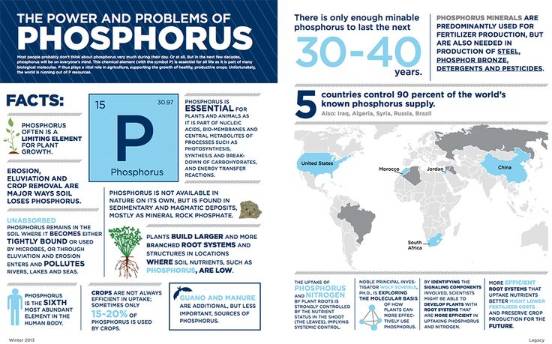The Benefits and the Costs of Phosphorus
- by
- Gene Caballero
- March 12, 2021
Phosphorus is an essential nutrient for the development and growth of plants. Most people know this. But you likely also know that phosphorus is a pollutant in large quantities. This infographic covers the good, the bad, and the ugly of phosphorus. Keep these tips in mind aloung with other steps for fertilizing the lawn.
Why is low phosphorus bad for plants?
Phosphorus is an essential nutrient for strong and healthy plants. When phosphorus is low, plants must grow larger, more spread-out root systems. Meaning more work for fewer nutrients. Phosphorus is an essential part of the membranes and metabolism of cells in both plants and animals.
If phosphorus is so good for plants, why is it a pollutant?
Here’s the deal, phosphorus is great at helping plants grow, on land and in the water. So when phosphorus run-off occurs in rivers, streams, and bays, algae blooms often occur. This creates an oxygen deprived atmosphere in the water killing off any fish or other animals that may be present. These algae blooms can also be toxic to pets and children.
What are the most common forms of phosphorus?
Phosphorus does not occur on its own in nature. It occurs in volcanic ash and sediment, and high levels in bat and sea bird guano, as well as animal manure.
How can I prevent losing phosphorus in my soil?
When cover crops are not present on soil, rainwater quickly strips the ground of phosphorus. That is why cover crops are an important part of reducing run-off. Additionally, crops often only receive 15-20% of the phosphorus that has been applied. One way to improve the nutrient uptake of plants is to apply fulvic acid.
Phosphorus is a limited nutrient
There is only enough phosphorus to last the next 30-40 years. This means we need to be mindful of how much we use, to preserve this valuable resource.
Your Green Pal's infographic titled "The Benefits and the Costs of Phosphorus" provides insightful information on the dual nature of phosphorus as both a vital nutrient and a potential pollutant. Phosphorus is crucial for healthy plant growth; low levels require plants to expend more energy growing extensive root systems. However, its excess leads to harmful algae blooms in water bodies, depleting oxygen and endangering aquatic life, and posing risks to pets and children. Phosphorus is found in nature combined with other elements, notably in volcanic ash, sediment, guano, and animal manure.
To minimize phosphorus loss and runoff, cover crops are recommended as they reduce rainwater erosion. Since plants typically absorb only 15-20% of applied phosphorus, enhancing uptake with fulvic acid is suggested. Given that phosphorus reserves may only last another 30-40 years, responsible usage is imperative to conserve this finite resource.
At the end of the day, phosphorus is an essential nutrient for plants, but in the wrong amounts, it can be dangerous to your local waterways. This infographic comes from Noble Research Institute. Be sure to share this infographic with your friend and family so they can learn about the best ways to use phosphorus.
Powered by Froala Editor











